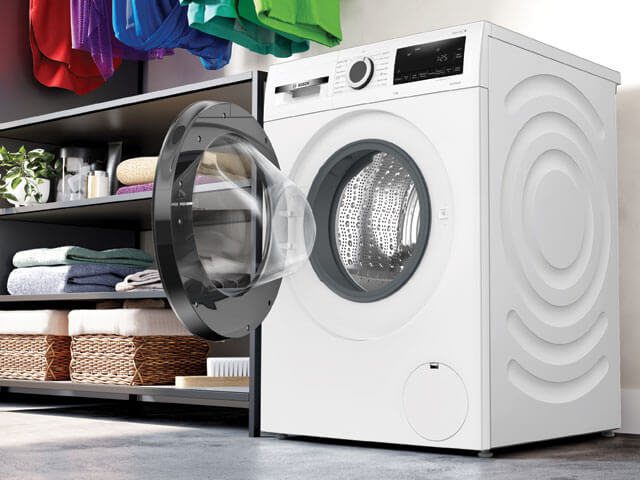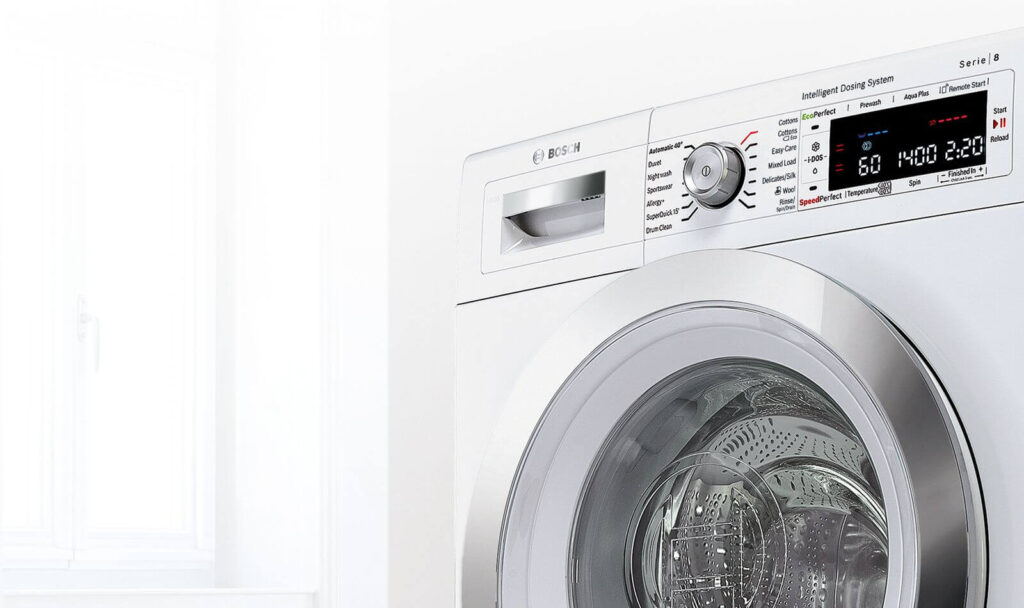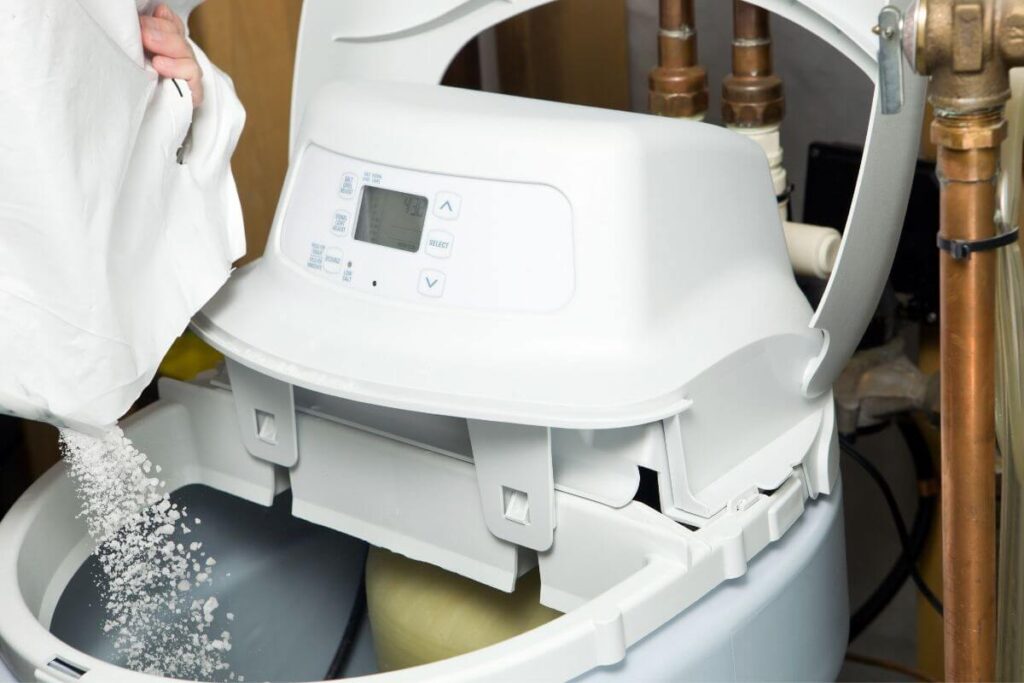
There’s nothing like the blissful sound of silence. Unfortunately, the modern world bombards us with noise from all directions, and sometimes, the cacophony seems never-ending. One common source of unwanted noise in our lives is our trusty household appliances. From the rattling dishwasher to the clanking washing machine, these everyday helpers can make our homes feel like a construction site. But fear not, for in this extensive guide, we’ll explore a myriad of strategies and techniques to silence those noisy appliances, bringing peace and quiet back into your life.
Why Do Appliances Make So Much Noise?
Before we dive into the solutions, it’s essential to understand why our appliances seem to be on a mission to break the sound barrier. Appliances are built to perform specific tasks efficiently, but the collateral effect is often noise. Let’s unravel the mystery of why appliances can be so loud.
Vibrations and Resonance
Appliances, particularly those with powerful motors, tend to vibrate during operation. These vibrations can set off a chain reaction, causing the appliance and nearby objects to resonate and amplify the sound. For instance, your washing machine may vibrate as it spins, causing the entire laundry room to reverberate with noise.
Solution: The key to addressing vibrations and resonance is to dampen them. You can achieve this through various means, which we’ll explore in detail later in this article.
Moving Parts
Many appliances contain moving parts, such as motors, fans, and agitators. These components, while essential for the appliance’s function, can generate noise. Friction, lack of lubrication, or wear and tear can make these moving parts emit clatters, hums, and rattles that disrupt your peace and quiet.
Solution: Regular maintenance and addressing specific issues with moving parts can significantly reduce the noise produced by these components.
Poor Installation
The way an appliance is installed can also have a significant impact on its noise levels. A shaky or unstable installation can lead to more vibrations, resulting in more noise. Additionally, if an appliance isn’t leveled correctly, it can produce uneven vibrations, creating a raucous environment.
Solution: Properly installing your appliances and ensuring they are level and secure can make a world of difference in noise reduction.
Now that we’ve pinpointed the reasons behind the noise, let’s delve into the solutions to silence your appliances and bring tranquility back into your home.
Silencing Strategies
Maintenance Matters

Maintaining your appliances is the first line of defense against noise. Regular upkeep can keep your appliances running smoothly and quietly. Here’s a breakdown of maintenance tasks for common household appliances:
| Appliance | Maintenance Tasks |
| Washing Machine | Check and tighten loose parts, inspect hoses for obstructions, clean the lint filter regularly. |
| Refrigerator | Clean condenser coils, ensure proper leveling to prevent vibrations. |
| Dishwasher | Inspect and clean spray arms, remove debris from the drain. |
| Air Conditioner | Change or clean the filters, tighten loose screws, lubricate fan motor if applicable. |
Solution: Regular maintenance is essential. Create a schedule to perform these tasks to keep your appliances in tip-top shape.
Noise-Reducing Mats
One effective solution to minimize noise from appliances that vibrate is to place noise-reducing mats or pads beneath them. These specialized mats are designed to absorb vibrations and reduce their transmission into the floor, which can make a significant difference.
Solution: Place noise-reducing mats under appliances like washing machines, dryers, and even air conditioners to absorb vibrations and dampen noise.
Soundproofing Blankets
For appliances like dishwashers and washing machines, soundproofing blankets or curtains can be a game-changer. These materials are specifically designed to block noise and are a must-have for anyone seeking some peace and quiet.
Solution: Wrap your noisy appliances with soundproofing blankets to significantly reduce the noise they emit during operation.
Tighten Loose Screws and Bolts
Loose screws and bolts can lead to increased vibrations and noise. Grab your toolkit, identify the culprits, and give them a good twist to tighten them up.
Solution: Periodically check your appliances for loose screws and bolts, especially after moving them, to ensure they remain secure and quiet.
Isolate Appliances
Isolation mounts, such as anti-vibration pads, can be used to isolate appliances from their surroundings. By preventing vibrations from traveling through your floors and walls, you can achieve a quieter environment.
Solution: Place anti-vibration pads or isolation mounts under appliances that tend to vibrate excessively, such as washing machines or treadmills.
Upgrading Your Appliances for Quietude
Sometimes, despite your best efforts, your appliances are just inherently noisy. In such cases, it might be worth considering an upgrade to a quieter model. However, before you rush out to buy the latest and greatest, here are some factors to keep in mind.
Noise Ratings
Appliances come with noise ratings, usually measured in decibels (dB). Look for appliances with lower dB ratings, as they are generally quieter.
Solution: When shopping for new appliances, pay close attention to the noise ratings and opt for models with lower decibel levels.
Energy-Efficient Models
Modern, energy-efficient appliances are not only good for the environment but also tend to be quieter. They are designed with noise reduction in mind, so upgrading to an energy-efficient model can be a win-win.
Solution: Consider energy-efficient appliances to enjoy the dual benefits of saving energy and reducing noise.
Smart Appliances
Many smart appliances are engineered to operate more quietly. They often come with noise-reduction features and have the added benefit of remote operation, allowing you to time your appliance use to minimize noise disturbances.
Solution: Explore smart appliances for a quieter and more convenient living space.
Soundproofing Your Living Space

Your appliances might not be the only culprits when it comes to noise in your home. The way your living space is designed can also have a significant impact. Let’s explore some soundproofing techniques to maintain peace and quiet throughout your home.
Caulking and Weatherstripping
Seal gaps and cracks around doors and windows with caulking and weatherstripping. These simple solutions can help keep exterior noise at bay.
Solution: Regularly inspect and seal gaps around doors and windows to prevent noise from infiltrating your home.
Wall Insulation
Invest in quality wall insulation to minimize noise transmission from room to room. Proper insulation can make a substantial difference in creating a quieter environment.
Solution: Consult a professional to assess and upgrade your home’s insulation for maximum noise reduction.
Soft Furnishings
Strategically placing soft furnishings like rugs, curtains, and cushions can help absorb and dampen sound, making your living space more peaceful.
Solution: Decorate your home with soft furnishings that not only enhance the decor but also serve to reduce noise.
Acoustic Panels
Consider installing acoustic panels on your walls or ceiling. These panels are designed to absorb sound and can be a stylish addition to your decor while significantly reducing noise.
Solution: Customize your space with acoustic panels for a visually appealing and quieter living area.
DIY Noise Reduction
If you’re a fan of do-it-yourself projects, here are some creative DIY solutions to silence your appliances without breaking the bank.
Furniture Pads
Use furniture pads under your appliances to reduce vibrations and noise. These are typically adhesive and easy to apply to the appliance’s feet.
Solution: Purchase furniture pads and attach them to the bottom of your appliances to dampen vibrations and noise.
Rubber Bands
Wrap rubber bands around vibrating parts of your appliances to dampen sound. Be cautious not to obstruct any moving components, but this simple solution can help reduce noise.
Solution: Experiment with wrapping rubber bands around vibrating parts to see if it reduces noise.
Foam Panels
Place foam panels inside cabinets or closets that house noisy appliances to muffle the sound. These panels are readily available at home improvement stores.
Solution: Install foam panels inside cabinets or closets to isolate noisy appliances from the rest of your living space.
The Ultimate Quest for Quietude
Finding peace and quiet in a noisy world is an ultimate quest, and silencing your appliances is just one step towards that goal. But oh, what a satisfying step it is! By applying these strategies and techniques, you’ll be well on your way to enjoying a home that’s as tranquil as a quiet countryside.
So, are you ready to tackle those noisy appliances and turn your home into a sanctuary of silence? With a little maintenance, some clever solutions, and a pinch of DIY creativity, you’ll be well on your way to enjoying some well-deserved peace and quiet.
Remember, in the quest for silence, it’s not just about hushing appliances; it’s about creating a harmonious and peaceful living space. And that, my friends, is a journey well worth embarking on. So, go ahead, make some noise about silencing the noise, and reclaim the serenity you’ve been longing for!
In conclusion, silencing noisy appliances for peace and quiet is not an unattainable dream. By understanding the root causes of the noise, practicing regular maintenance, and utilizing various soundproofing techniques, you can create a tranquil and serene living space where the only sound you hear is the sweet sound of silence. So, gear up, put these solutions into action, and let your home become the peaceful haven you’ve always wanted.
Frequently Asked Questions (FAQ) – Silencing Noisy Appliances for Peace and Quiet
Here are some commonly asked questions about reducing noise from household appliances and creating a more peaceful living environment.
Q1. Why are my household appliances so noisy?
A1. Household appliances can be noisy for several reasons, including vibrations and resonance, moving parts, and poor installation. Understanding these factors is essential to addressing the noise issue effectively.
Q2. Can I fix noisy appliances without replacing them?
A2. Yes, many noisy appliances can be made quieter through maintenance, soundproofing solutions, and isolation techniques. You don’t always need to replace them.
Q3. What maintenance tasks should I perform on my appliances to reduce noise?
A3. Maintenance tasks vary depending on the appliance, but common tasks include tightening loose parts, cleaning filters, lubricating moving components, and ensuring proper installation and leveling.
Q4. What are noise-reducing mats, and how do they work?
A4. Noise-reducing mats or pads are designed to absorb vibrations generated by appliances, preventing them from transmitting noise into the floor. Placing these mats under vibrating appliances can significantly reduce noise.
Q5. How do soundproofing blankets work, and where should I use them?
A5. Soundproofing blankets are designed to block noise. Wrap them around noisy appliances like dishwashers and washing machines to muffle sound. They are particularly useful in laundry rooms and kitchens.
Q6. What are some simple DIY solutions to reduce appliance noise?
A6. DIY solutions include using furniture pads under appliances, wrapping rubber bands around vibrating parts, and installing foam panels inside cabinets or closets to muffle sound.
Q7. How can I choose quieter appliances when upgrading or replacing old ones?
A7. Look for appliances with lower decibel (dB) ratings, which indicate quieter operation. Energy-efficient models and smart appliances are often designed to be quieter as well.
Q8. Do smart appliances help reduce noise, and how do they work?
A8. Smart appliances can be quieter due to their advanced design. They often come with noise-reduction features and can be operated remotely, allowing you to time your appliance use to minimize noise disturbances.
Q9. What are the benefits of wall insulation and acoustic panels for soundproofing?
A9. Wall insulation reduces noise transmission from room to room, creating a quieter living space. Acoustic panels absorb sound and can be a stylish addition to your decor while significantly reducing noise.
Q10. How can I maintain a peaceful living environment beyond silencing appliances?
A10. In addition to addressing noisy appliances, you can create a peaceful living environment by sealing gaps and cracks with caulking and weatherstripping, strategically placing soft furnishings to absorb sound, and considering overall home insulation.
Q11. What are the advantages of professional soundproofing services?
A11. Professional soundproofing services offer expert assessment and customized solutions for your specific noise issues, ensuring the most effective and long-lasting results.
Q12. Are there any noise reduction solutions for loud outdoor appliances, like air conditioners?
A12. Yes, for outdoor appliances like air conditioners, you can use noise-reduction enclosures or barriers to mitigate the sound. These structures help contain and deflect the noise away from your living space.
